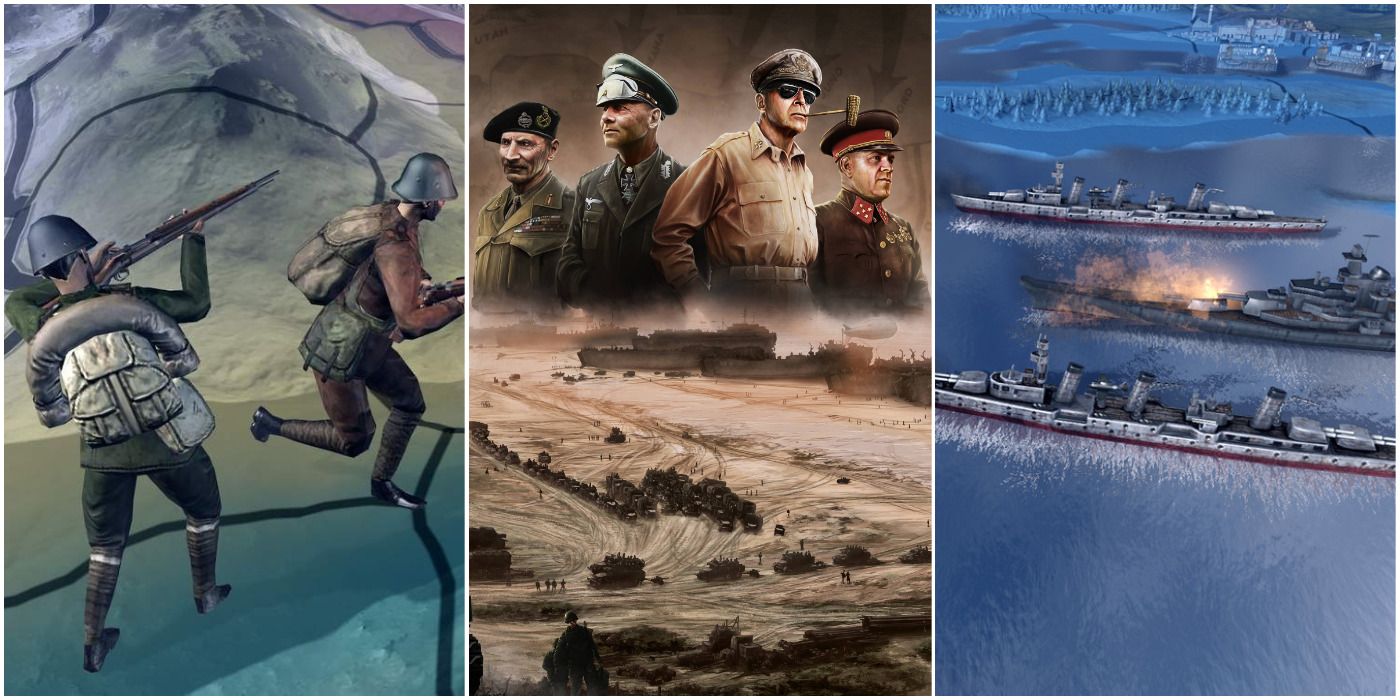
Like most games developed by Paradox Interactive, Hearts of Iron IV may seem intimidating to a beginner. Leading a country through the 20th century's greatest conflict is no easy task after all. One bad mistake can lead to certain doom for a nation that isn't careful. Myriad decisions, both large and small, need to be planned in advance in order to avoid catastrophic failures.
RELATED: Hearts Of Iron IV: Best Total Conversion Mods
Knowing the keys to success before starting the game can help immensely. Hearts of Iron IV possesses many layers. Coordinating those layers, especially in the midst of war, can often be difficult. However, with the right information in hand, conquering Hearts of Iron IV can become less of a headache and more of a breeze.
Updated July 27, 2021 by Mark Hospodar: Games developed by Paradox may seem awfully intimidating to newcomers. Hearts of Iron IV, now over five years old, has gotten even more complex through the release of various DLCs and updates. Gameplay mechanics such as supply, occupation, shipbuilding, and espionage have all been reworked to some extent. Players may remember how ridiculously easy it was to steamroll over enemies in the first year of the game's release. Now, after several years of much-needed polish, a little more finesse is required, even from veteran players. For fans looking to dive into the chaos of World War II for the first time, these pro tips will hopefully provide some welcome guidance for this growingly complex war simulator.
15 Guard The Coasts
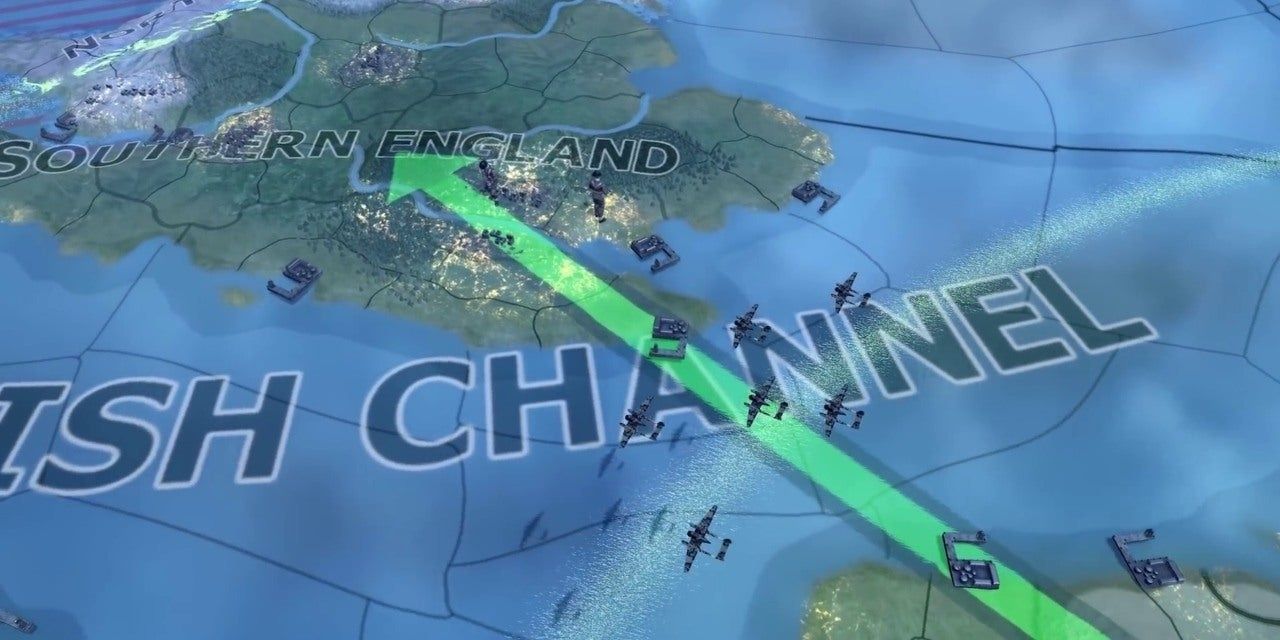
One aspect of the gameplay that many beginners tend to overlook and pros never ignore is coastal defenses. The attention this task entails obviously depends on which country the player is controlling. Landlocked nations need not worry about this problem.
Any country occupying a coast needs to implement some form of defense sooner rather than later. Unguarded shores easily invite enemy naval invasions. Build plenty of coastal forts and garrison the perimeter with second-line troops. Don't feel the need to construct a colossal chain of defenses. Even modest preparations can defeat enemy amphibious assaults.
14 Build A Variety Of Ships
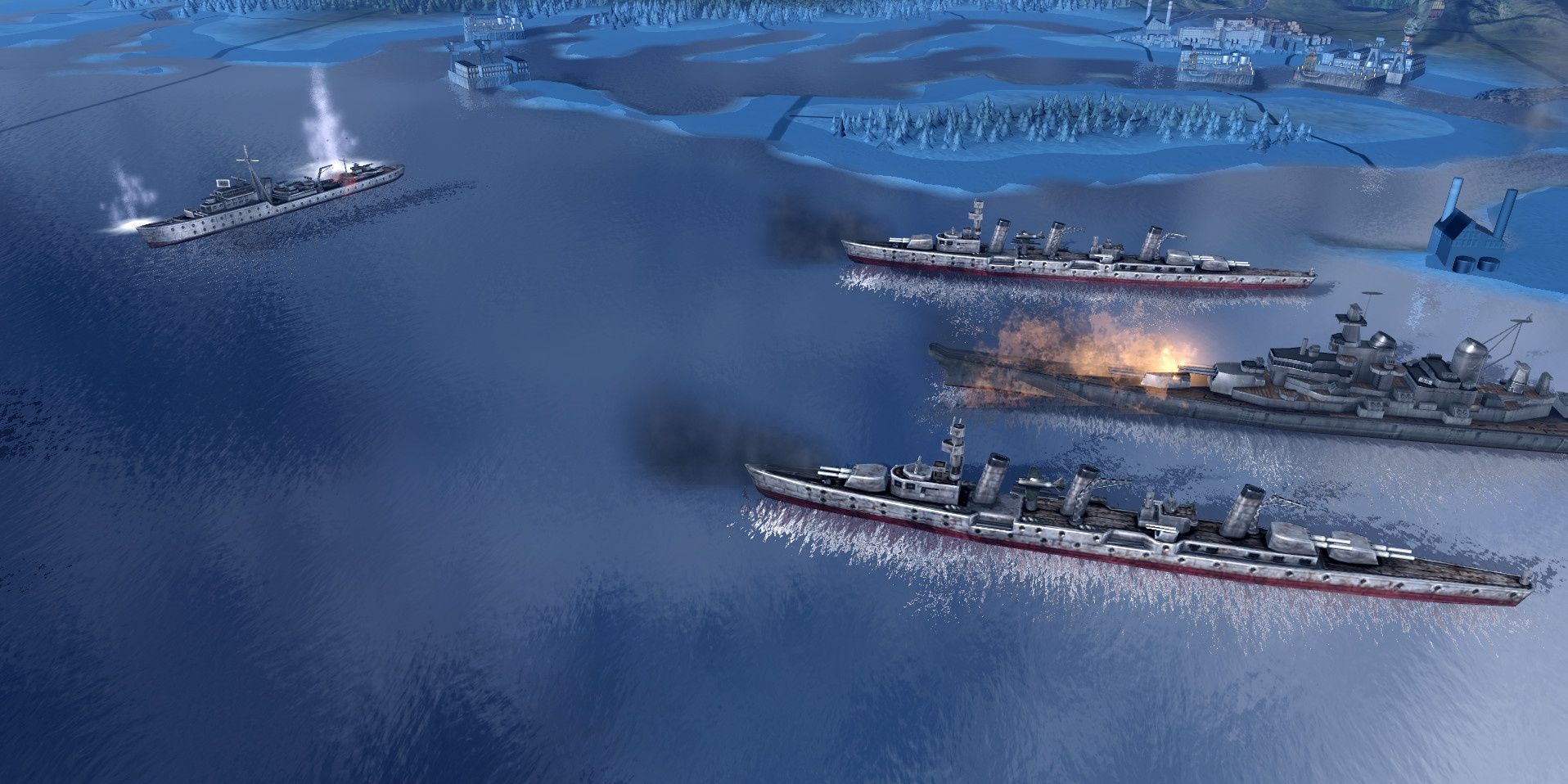
When playing as a major nation, it's vital not to neglect the navy. After all, why throw away a helpful resource? The key to any proper naval buildup is variety. New players learning the ropes may be tempted to just focus on one type of ship. However, that strategy isn't always very efficient.
A proper task force meant to engage the enemy should contain a healthy variety of ship types. Veteran players all have their preferences, but a good composition to aim for is around 4:1. In other words, there should be 4 screening ships for every 1 capital ship. Here's the breakdown of what constitutes screen and capital ships:
Screen Ships
- Light Cruisers
- Destroyers
Capital Ships
- Aircraft Carriers
- Super Heavy Battleships
- Battleships
- Battlecruisers
- Heavy Cruisers
The reason for this variety is that each ship type has its own strengths and weaknesses. A task group only composed of one ship type can be outmaneuvered/outgunned by a superior enemy navy. A variable collection of ships, on the other hand, is ready for anything. In addition, submarines can be grouped separately to form "wolfpacks" to terrorize enemy convoys.
13 Train Special Forces According To Your Needs
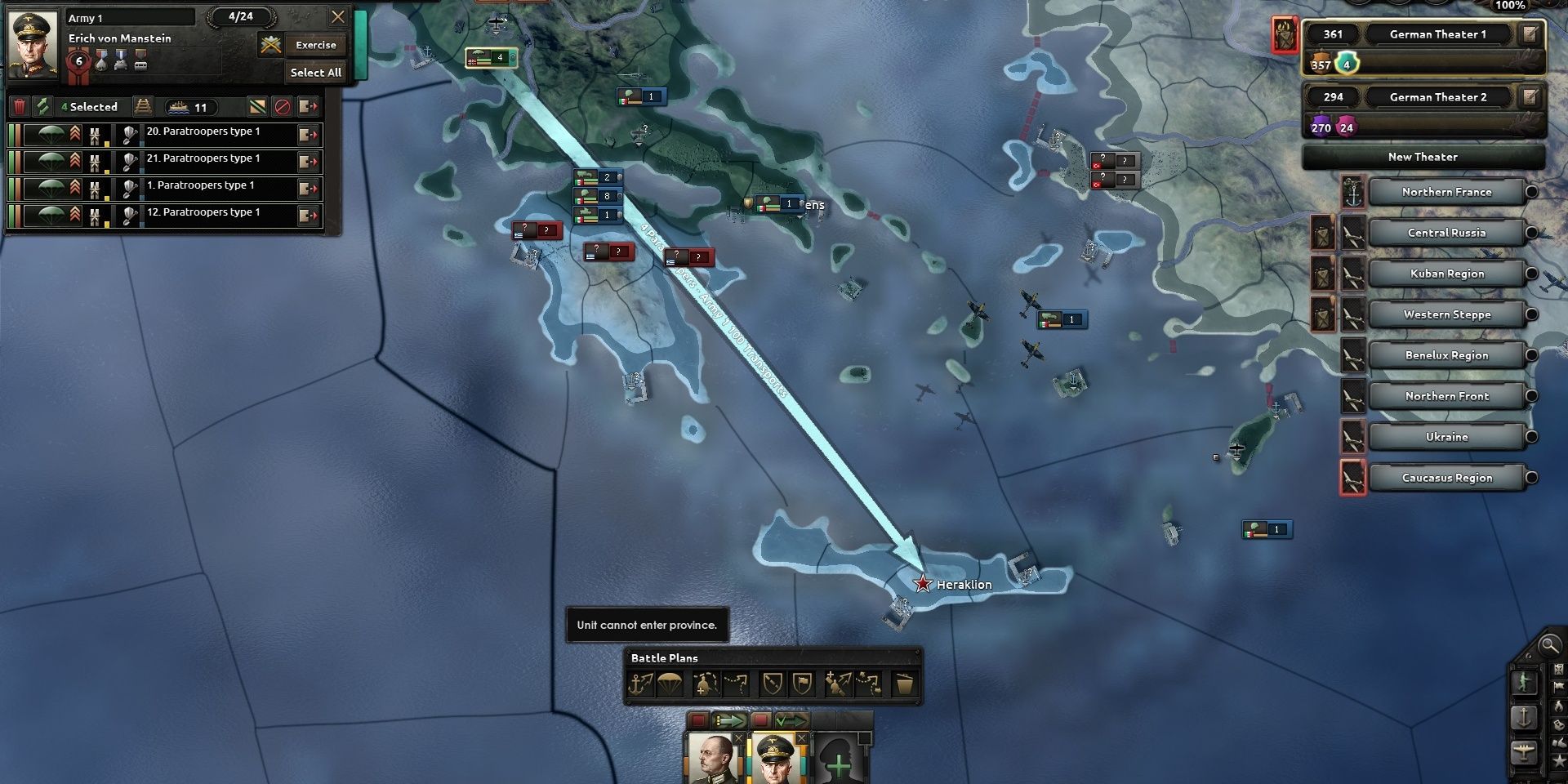
In the race to churn out as much infantry and guns as possible, it's easy to forget about Special Forces units. Special Forces come in three varieties: paratroopers, marines, and mountain troops. To maximize the efficiency of these troops, it's best to look at the map and plan ahead. Play to each unit's strength and watch them go to work.
Let's use a naval invasion of Great Britain as an example. A German player will want both air and naval superiority over the English channel (use that variable navy!). Marine battalions may want to secure the ports in preparation for the arrival of the main army. Paratroopers can also be dropped behind enemy lines to cut supply routes and hold major cities.
In this example, mountain infantry will not be very useful overall due to England's terrain. It's important to remember that players are limited to the amount of Special Forces units they can train. A cap limit is instituted, whereby Special Forces can't exceed more than 5% of the player's total battalion strength. As such, don't waste resources on training units you won't need!
12 Occupation & Collaboration
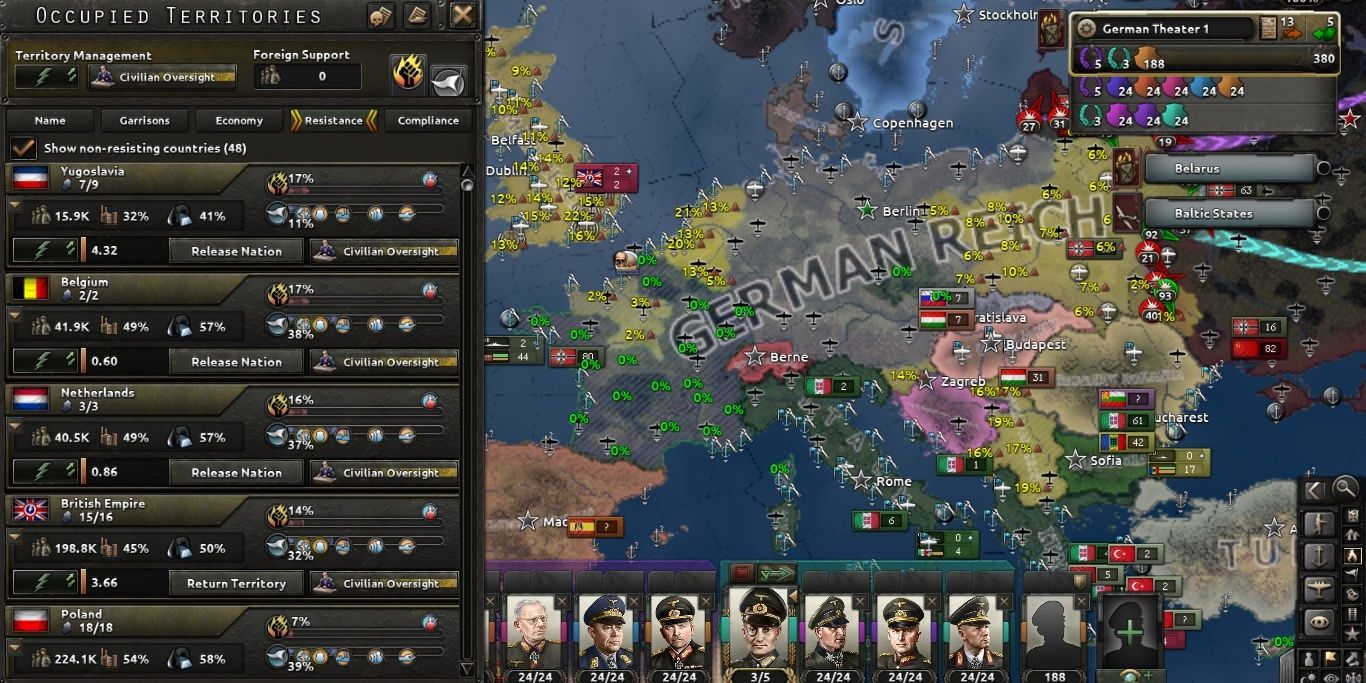
Occupation is now a more complicated endeavor in Hearts of Iron IV than it was at the time of release. Players hoping to directly occupy every single territory they conquer are going to have to invest extra time and resources to make sure it's secure.
RELATED: The Witcher 3: Historical Easter Eggs You Missed During Your Playthrough
A territory that's successfully occupied will yield more resources and factories for the player. However, clamping down on resistance effectively is essential. Otherwise, habitual sabotage by the angry populace won't do the player much good. A worthwhile alternative involves setting up collaborationist governments. Although players won't directly administer the territory, the headaches of collaboration will be passed on to a semi-independent puppet government.
11 Invest In The Intelligence Agency
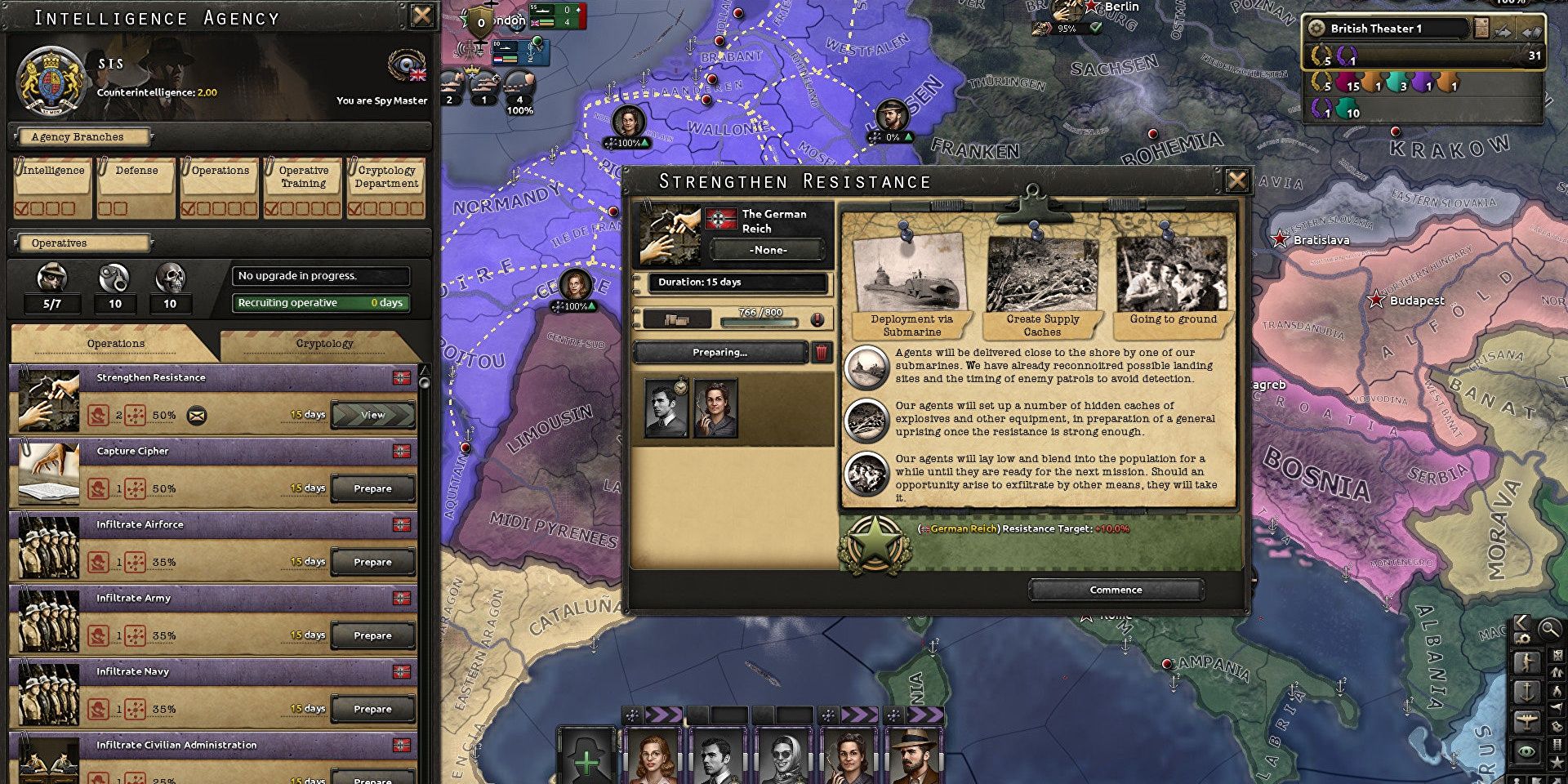
Utilizing one's Intelligence Agency effectively is yet another handy tool in a nation's repertoire. There are quite a few different avenues players can invest in, however, it's useful to decide ahead of time what kind of spy agency a player wants.
For example, if the player knows that they'll be occupying a lot of territories, it's beneficial to focus on the Defense branch. This specialization grants bonuses to anti-partisan activities and makes one's operatives more effective at rooting out resistance. As with all aspects of managing a country at war, the key is to play to one's strengths and stick with them.
10 Unlock Those Extra Research Slots
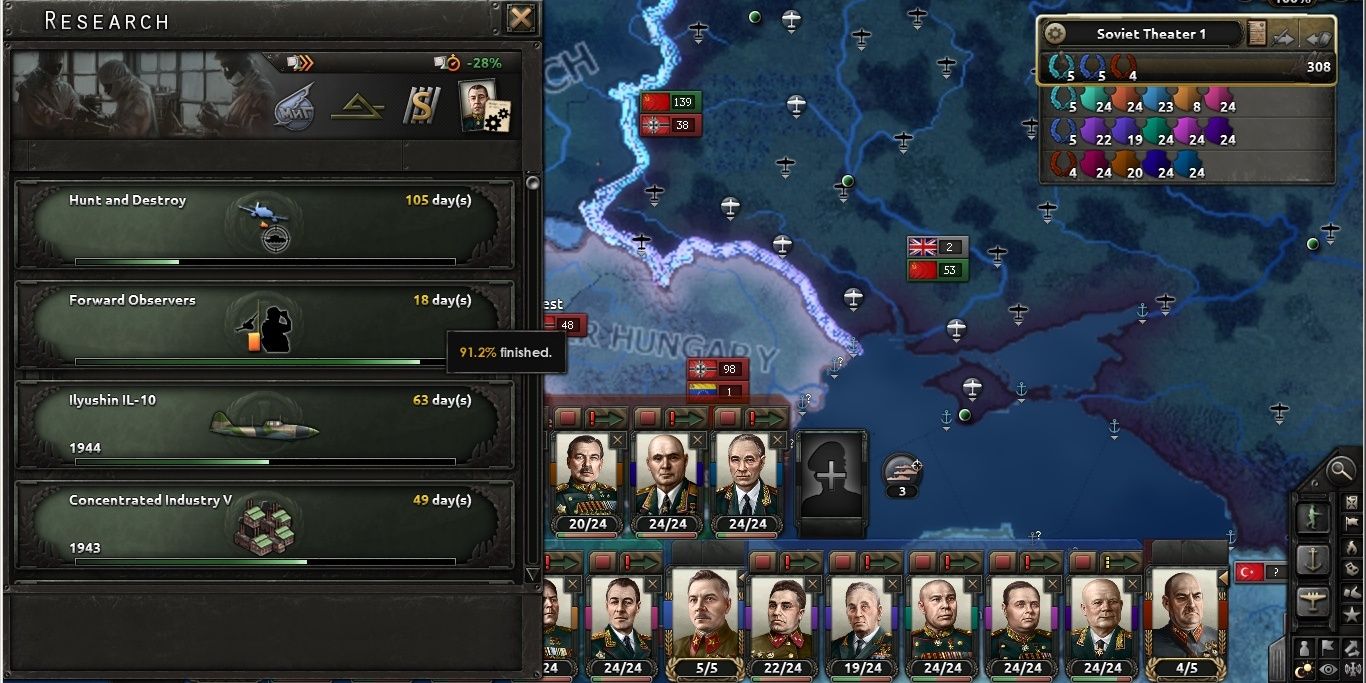
Research is vitally important in keeping pace with other nations in Hearts of Iron IV. Among other things, research makes industry more efficient and combat units more deadly. The faster a country can conduct its research the more of an edge it will have over its enemies.
RELATED: Crusader Kings 3: Trait ID List
Large, more developed countries tend to start with three or four slots already unlocked. Small and less developed nations only start with two, thus suffering from a disadvantage. Regardless of the initial count, smart players should always prioritize National Focuses that grant an additional slot. Outproducing and outgunning one's opponents ultimately result in victory and research serves as the linchpin.
9 Always Prioritize Production Technology
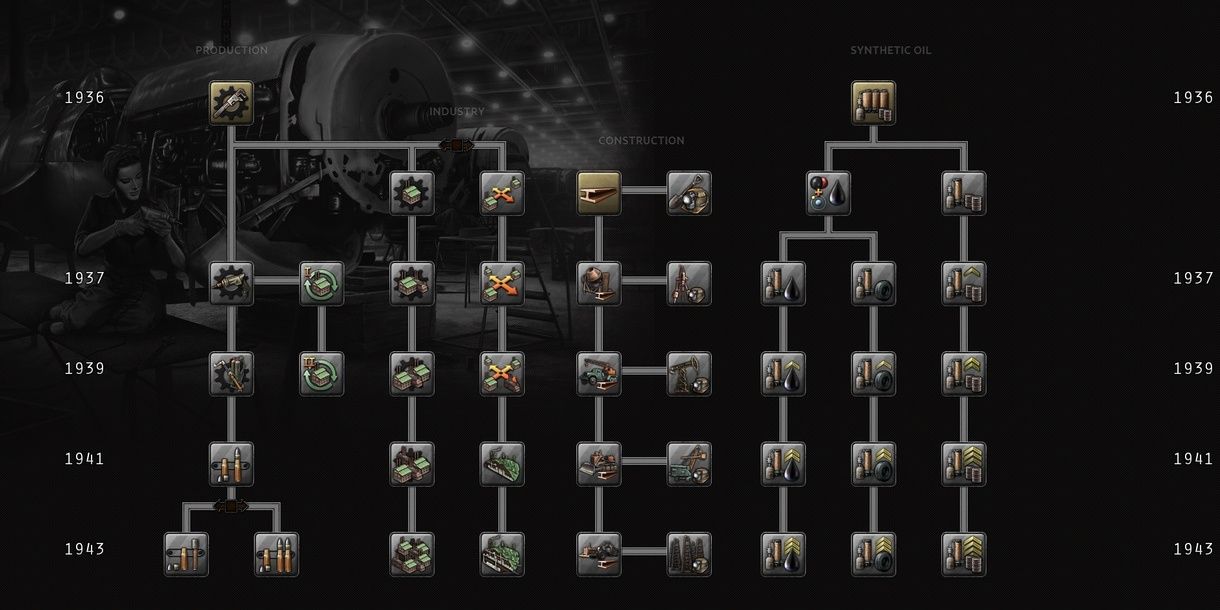
Now, what to do with all those research slots? Technology that benefits the military should never be neglected, but neither should production. Efficient production is imperative for keeping those tanks and planes rolling off the assembly line in short order. Research plays a key role in maintaining that efficiency.
At least one research slot should always be kept open for an industry technology. Playing as an Axis country, it's typically a good idea to choose the Dispersed Industry tree considering the threat of being bombed is quite high. Allied countries, like the United States, can get away with Concentrated Industry. In addition, always prioritize Production, Construction, and Fuel/Rubber technologies whenever possible to stay ahead of the curve.
8 Save That Fuel
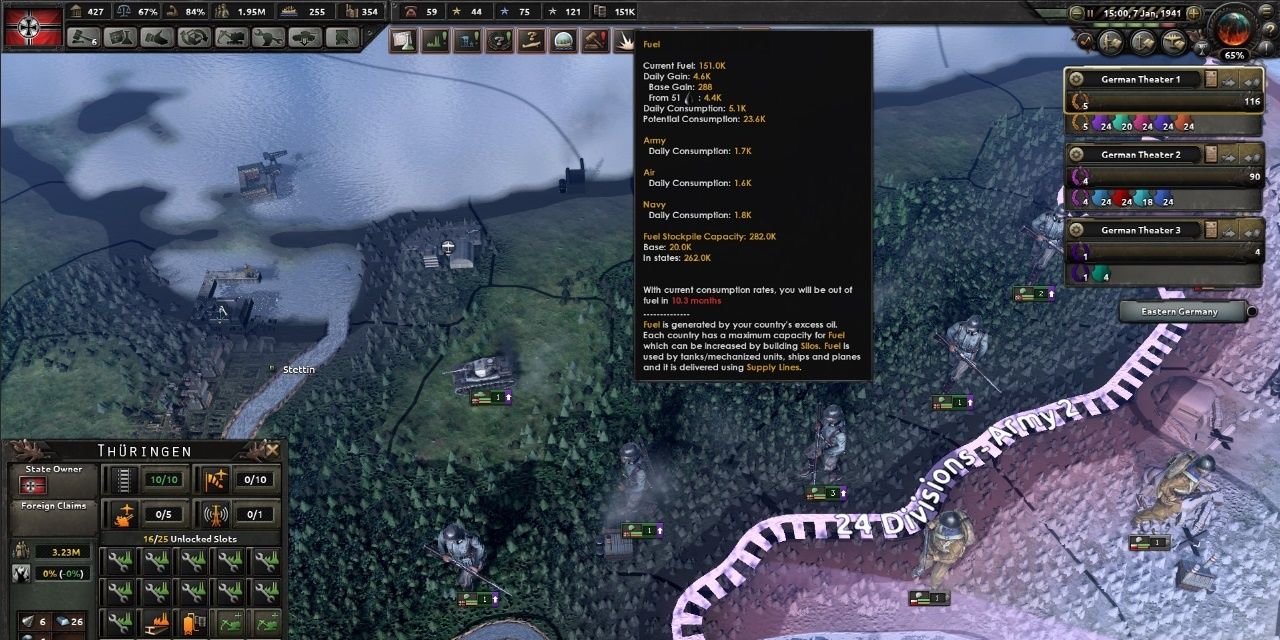
20th-century warfare cannot be conducted without fuel. Nearly every unit in the game requires some degree of fuel, whether it be tanks, half-tracks, artillery, ships, or planes. If a nation's entire fuel reserves are depleted, units will still move but will start to suffer massive combat and speed penalties.
RELATED: The Most Historically Accurate Video Games Ever Made, Ranked
As such, players always need to keep an eye on their fuel levels. Building synthetic refineries help, but fuel silos also need attention. Larger fuel silos mean larger amounts of oil that can be stockpiled for future use. Invading and occupying countries with large amounts of oil is also a helpful strategy. Don't let those tanks run dry!
7 Keep Training The Troops
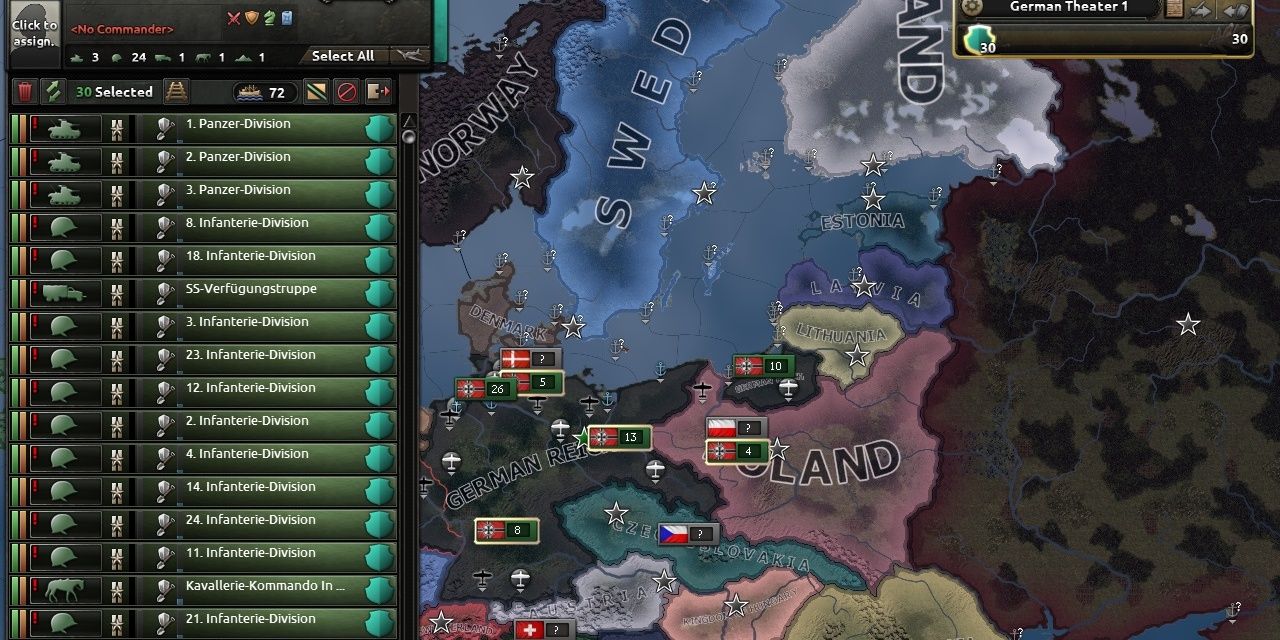
Although there are diplomacy mechanics in Hearts of Iron IV, World War II will eventually break out at some point. A nation's military is going to play a pivotal role when it comes to either victory or defeat. Whether or not a player's military is already large or small at the start of the game, more is going to be needed regardless.
Starting in the 1936 bookmark is favorable considering it gives the player about four years to build up their forces. Infantry and artillery are vital, but tanks also need to be given some early consideration if practical. When upgrades are made make sure they go to the principal front-line troops that conduct most of the fighting. Garrison units don't need all of that fancy new equipment.
6 Exercise Those Troops
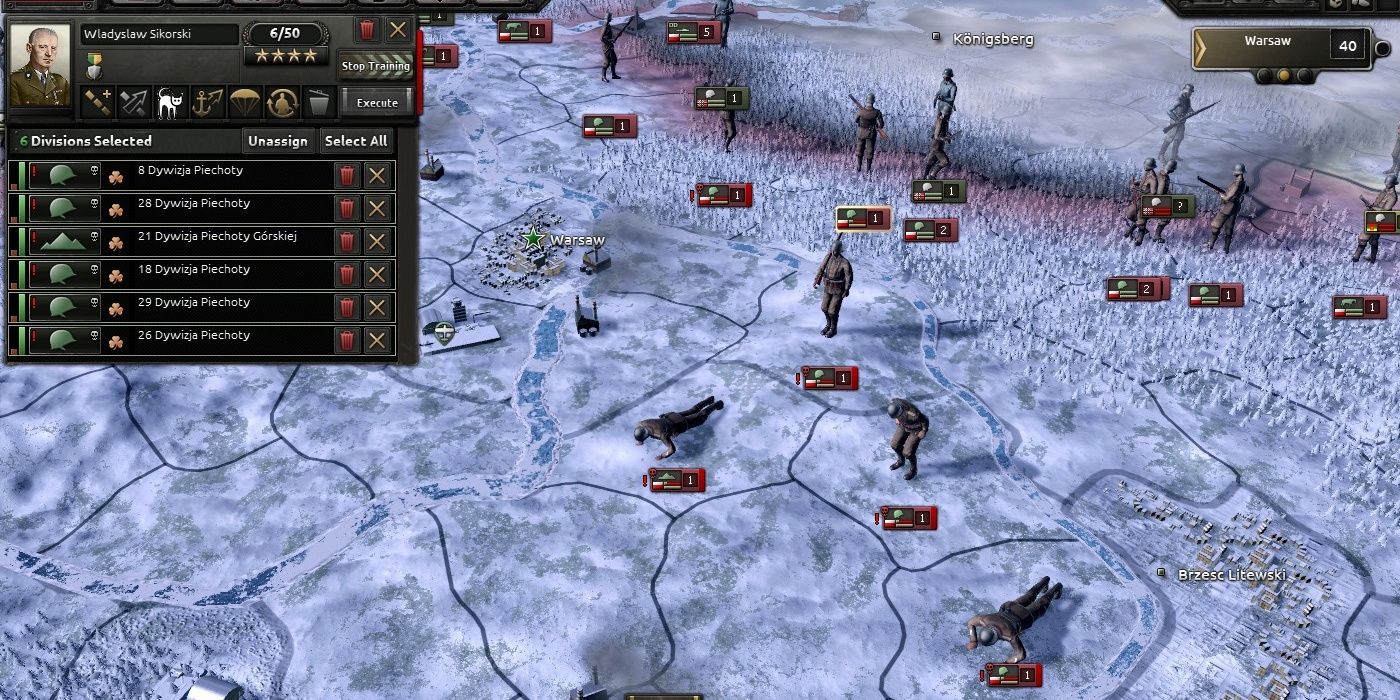
Countries that start the game with significant military forces (like Germany) should never be kept idle. Likewise, newly trained divisions should never just sit on their hands waiting on the front line. Assuming there is no imminent danger land units should conduct military exercises. The same holds true for air and naval units as well.
Exercising consumes equipment, which can potentially slow down the training of new units and rolling out upgrades. Nevertheless, units that exercise will eventually reach the "Regular" experience level, making them more deadly on the battlefield. Exercising also accrues a small amount of Land, Air, or Navy Combat Experience, allowing for additions to be made to the divisional templates.
5 Stick With 20 Combat Width (Most Of The Time)
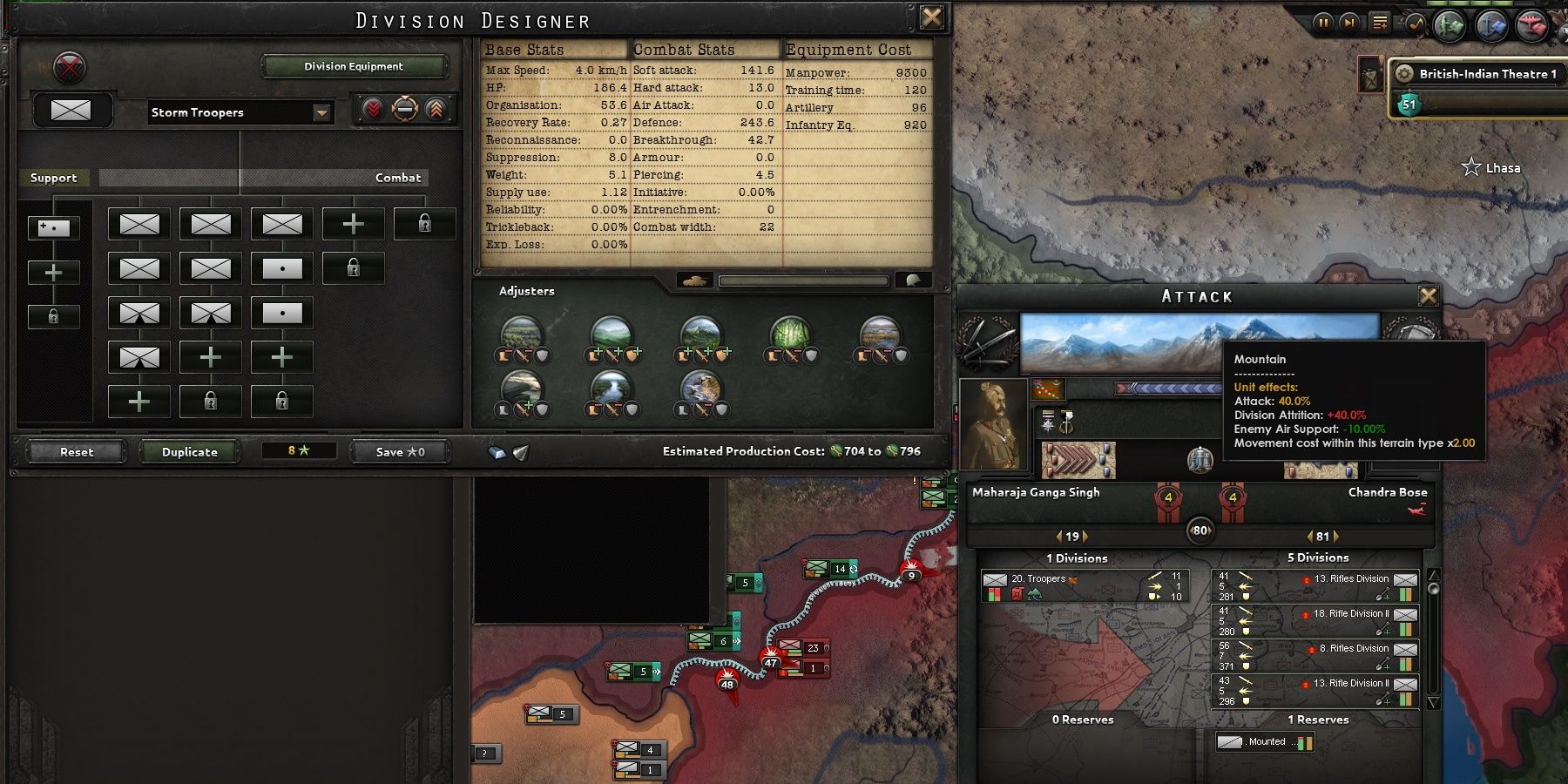
Debate continues to rage amongst Hearts of Iron fans concerning optimal combat width. Put simply, a division's combat width dictates how much room it takes up on a battlefield. The debate centers around which is better: 20 or 40 combat width?
RELATED: The Worst Turn-Based Strategy Games Of All Time (According To Metacritic)
Generally, the majority of a player's units should be kept at 20 combat width. Maintaining long front lines with every single division at 40 width can be a drain on supplies and men, especially if things go sour. It's a much better idea to maintain some elite units, such as armored divisions, at 40 width. These units, since they're beefier, can be used as spearheads when attempting to crack an enemy defensive position. The smaller and more numerous 20 width units can then finish the job.
4 Bank Some Extra Political Power Early
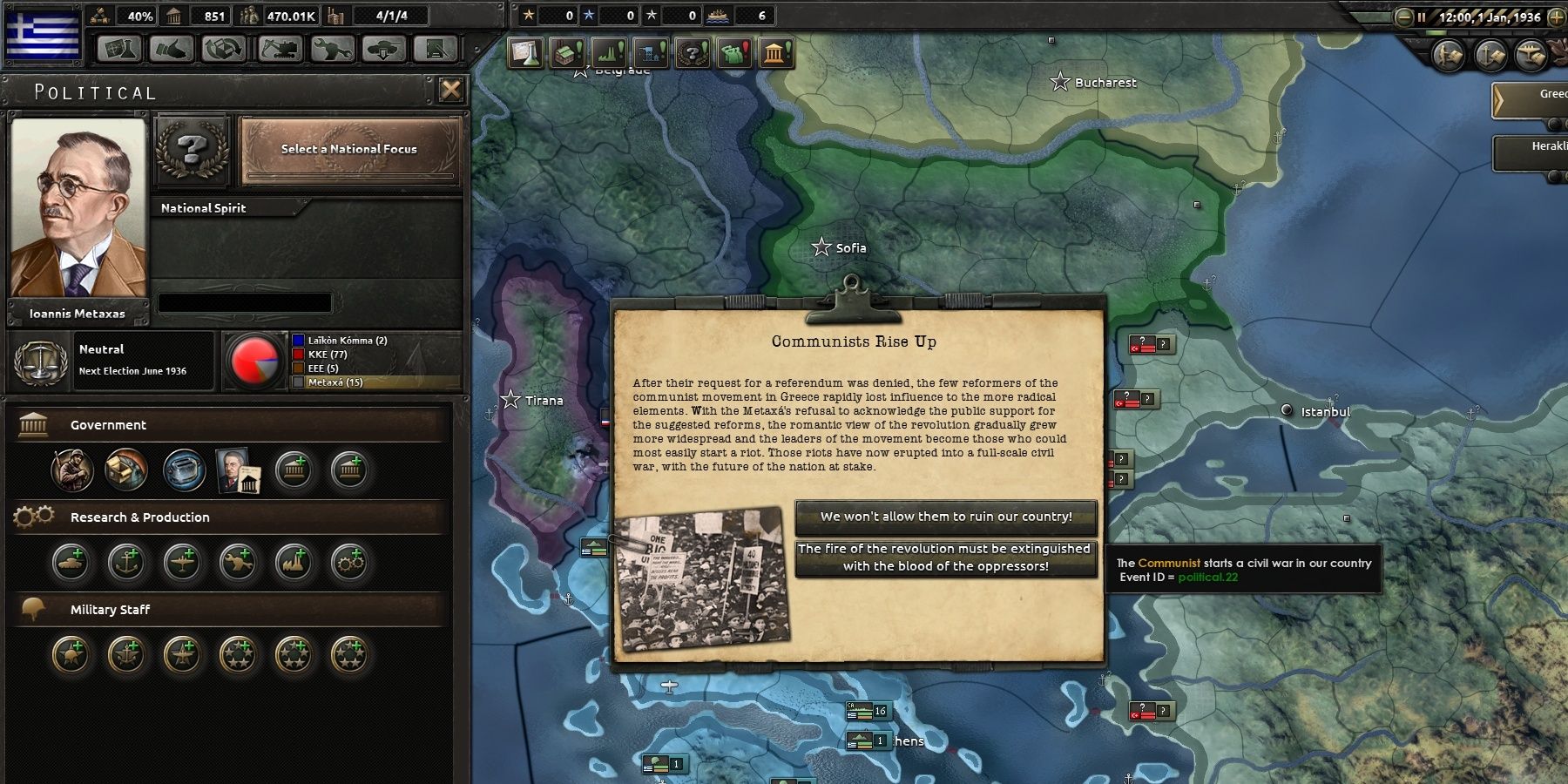
Political Power acts as a sort of currency in Hearts of Iron IV. Spending Political Power is necessary when a player wants to perform an action such as changing a law or appointing a new advisor. A nation accrues political power gradually, but there exist other factors that can help speed up the process.
Generating large amounts of Political Power early can be extremely beneficial. Appointing an advisor that grants a bonus to Political Power accrual is a great first step. With more Political Power, more advisors can be appointed, which will benefit other sectors of the economy as well as war production. Draft and economy laws can be changed faster to a more war-centered footing, giving the player an edge over his opponents. There's no such thing as too much Political Power in the early game.
3 Get On A War Footing As Quickly As Possible
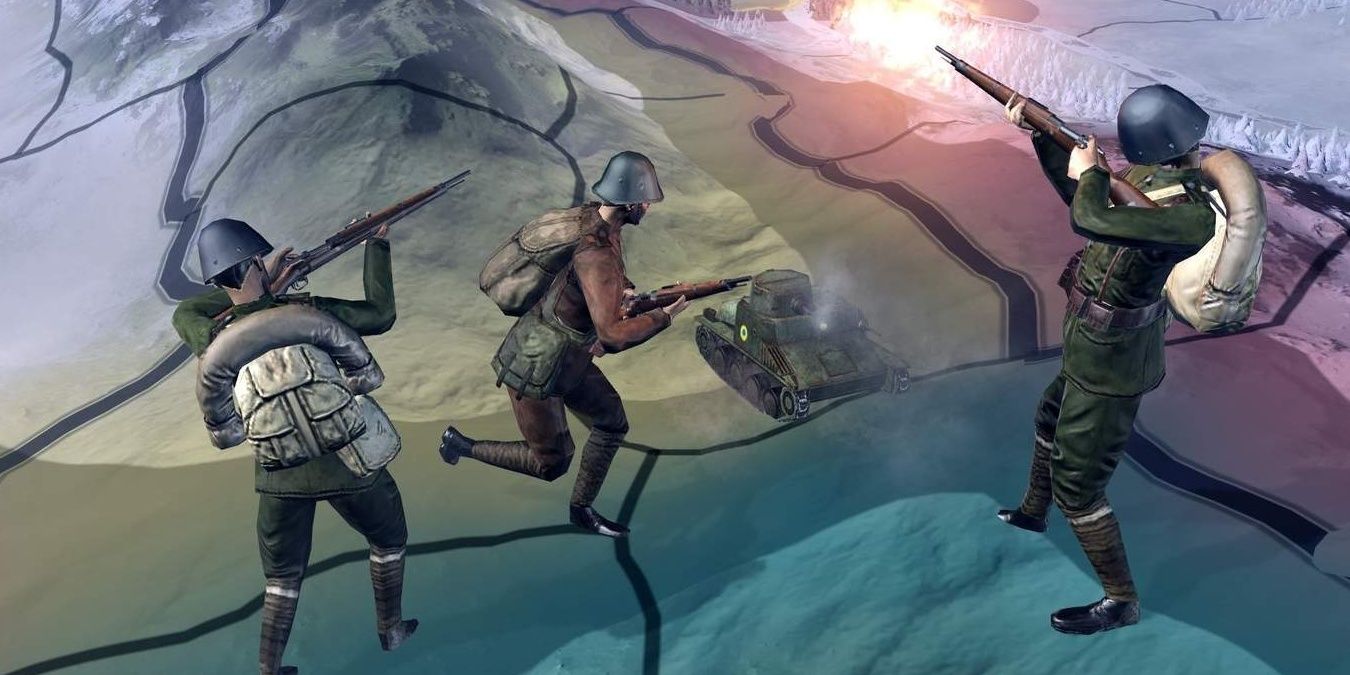
World War II is going to erupt whether the player likes it or not. Being unprepared usually results in getting steamrolled by a tougher neighbor. Luckily, players have the benefit of hindsight when it comes to World War II. They have until about the start of 1940 to get their houses in order.
Having extra reserves of Political Power can really come in handy here. Moving towards a war economy should be done at the player's earliest convenience to scale back consumer good consumption. Tougher conscription laws also need to be passed so that manpower doesn't become an issue. Appointing a political advisor that increases a nation's war support can be beneficial when trying to enact these changes.
2 Prioritize Military Factories
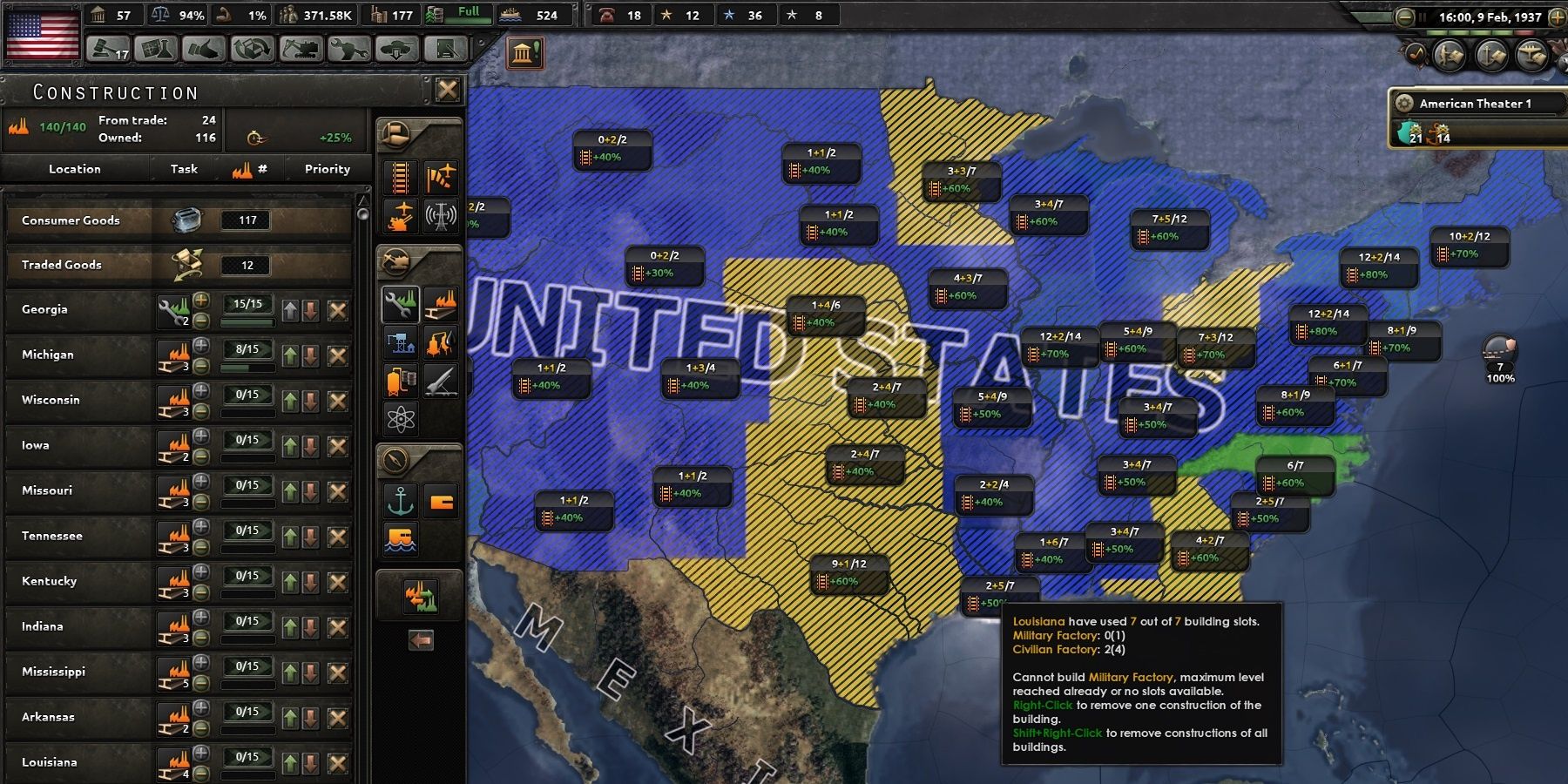
Players have two basic choices when it comes to factories: civilian or military. Civilian factories increase the speed of construction and can also be used for trading with other nations. Military factories, on the other hand, produce all the necessary war material needed for the army.
In the end, military factories are going to have to take priority. Pumping out the vital equipment needed to win a war makes or breaks a campaign. This holds especially true whenever playing as a country where time is of the essence. Build enough civilian factories to fulfill the basic needs of trading and construction, then move forward with the military buildup.
1 Don't Forget To Trade (To Some Extent)
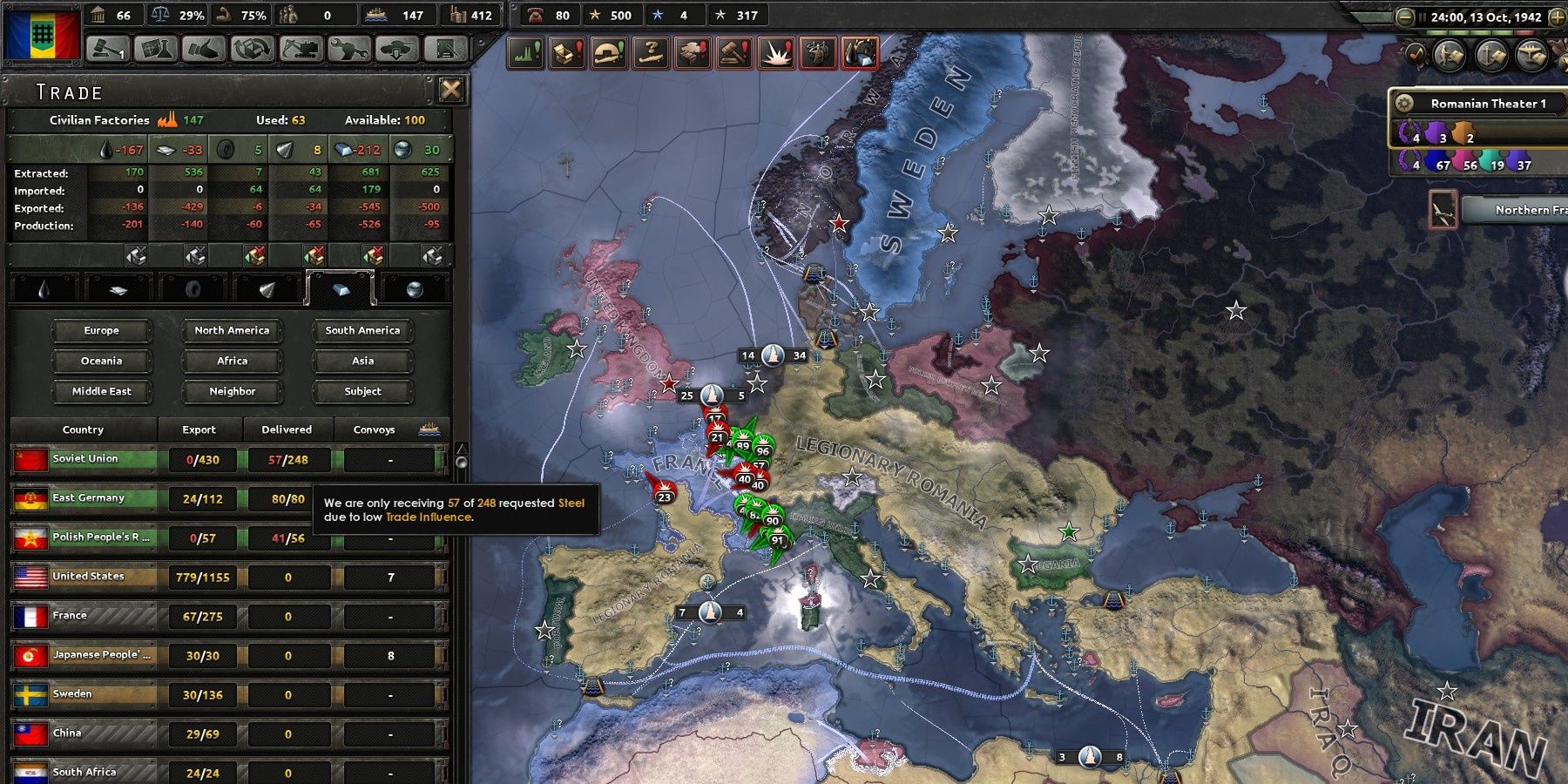
Trading in Hearts of Iron IV is a pretty straightforward process. Players can give up some of their civilian factories in exchange for the resources they may need. Resources, like oil and rubber, play an important role in production. Not having enough resources imposes a penalty on production in certain cases.
Thus, it's a good idea to have some extra civilian factories so some trading can be accomplished. However, some deficiency in resources is still okay, even with the mild penalty. It's more important to use the civilian factories to construct other things one's country may need. Just keep things above water and don't feel the need to go overboard when it comes to trading.

